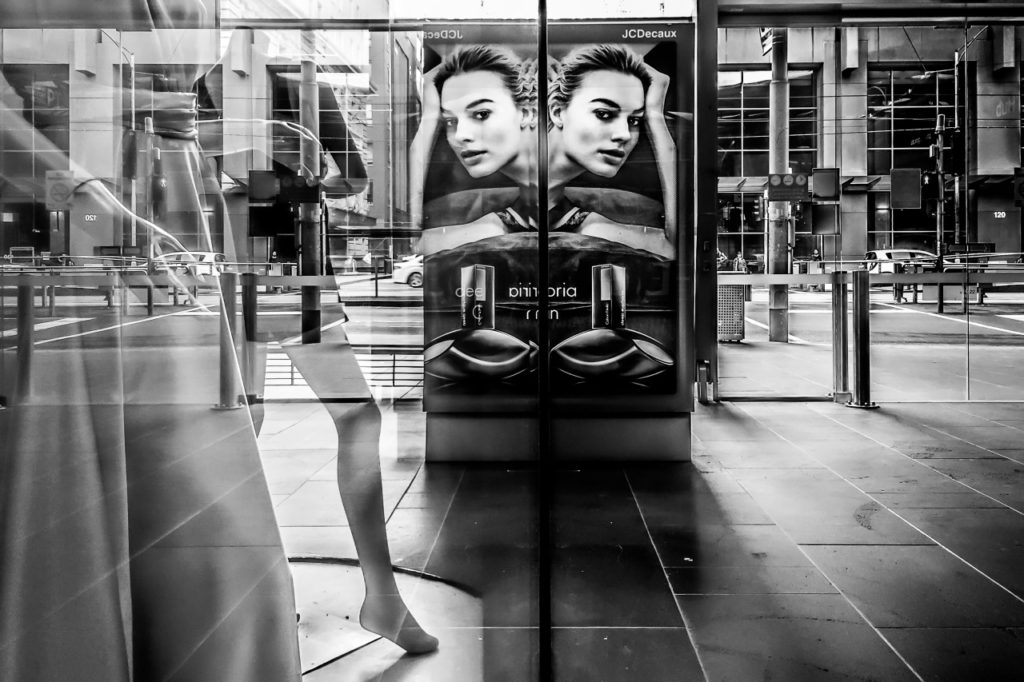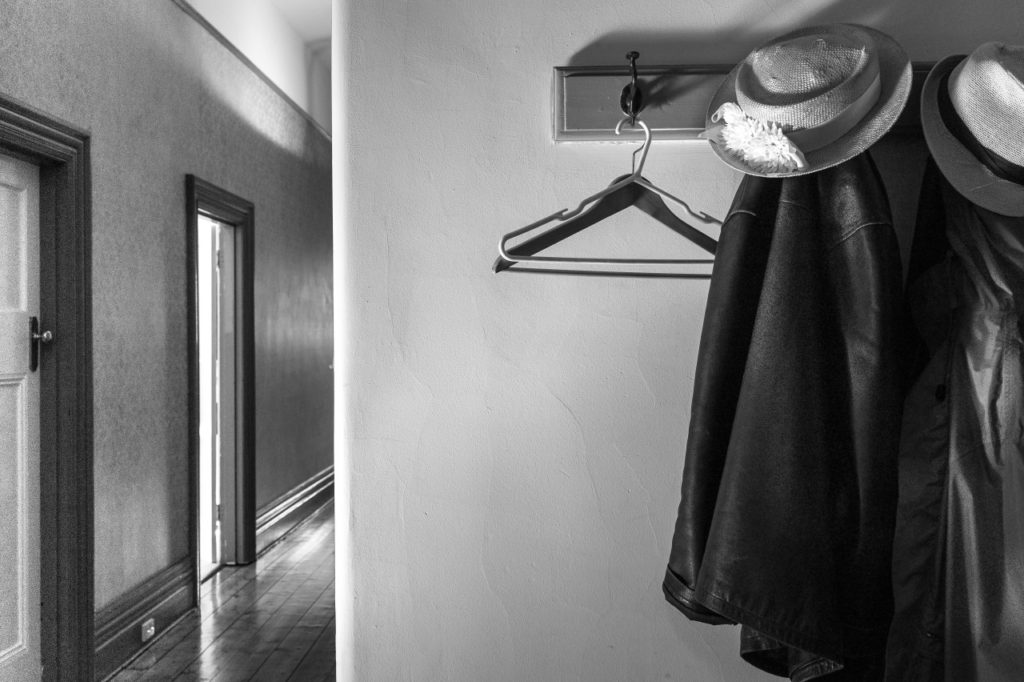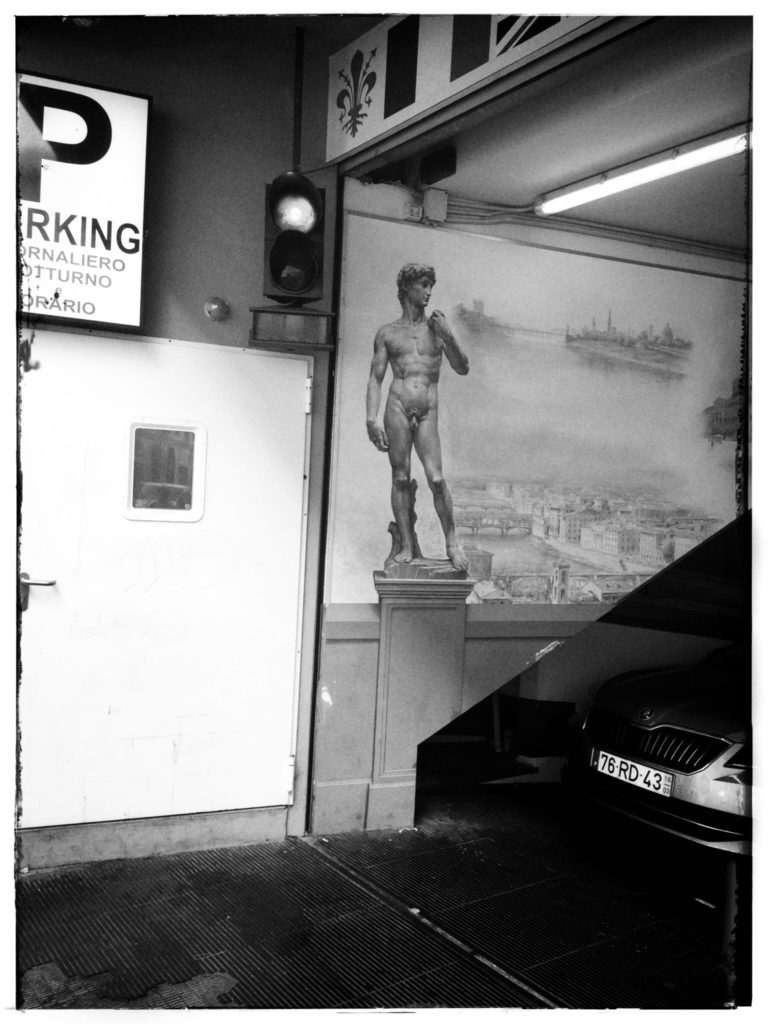 Florence
Florence
If you’re familiar with Leica history, you’ll know that the Leica revolutionized photography because it was small and light and allowed photographers to carry it with them wherever they went. Prior to the Leica, cameras were big and heavy and cumbersome, requiring tripods and supporting paraphernalia to laboriously process the results. The Leica conquered the world not because it produced the ‘best’ photos but because it got the shot, technical specifications secondary. Thus the long storied history of the Leica in the documentary tradition.
I’m reminded of this reality while traveling with my M4 and digital Ricohs, both of which I’ve rarely used on my current trip, mostly because I’m sick of lugging them around. I have burned a couple of rolls of film with the M4, but it’s mostly been shots of people dear to me, usually at homes of friends or out to dinner etc. And that’s because those are the photographs I want to last, because those are the photos that ultimately have meaning for me and it’s comforting to know I’ll have a negative, a physical thing to refer back to in the years ahead.
What I love about film is its permanence. In the last year I’ve been bulk scanning a lot of my negatives from when I was young and just learning photography, and what amazes me is how fresh those negatives are even close to 50 years later. Print them up again now, using the latest technology (Lightroom, Photoshop, Silver Effects, archival inkjet printing) and its almost as if I’ve been transported back through time, back again with family, friends and lovers long gone. A while ago I scanned and printed a 40 year old negative of my first dog, a sweet little girl named Shannon I’d rescued from a shelter in Greenwood Lake, New Jersey. While our time together was short – a few years before I moved south and Shannon grew old and happy with a girlfriend’s family – she’s always remained special to me, and that photo, now framed and hanging in my bedroom where I see it every night from my bed, often triggers in me involuntary memories long forgotten, returning me almost palpably to another life and the ones I then loved. Loved ones only truly die when there’s no one to remember them anymore, and that picture, just a casual snap on an uneventful day, keeps her alive for me even though she’s been dead now for 30 years. I’m awed by this power photography possesses, the power to give permanence to these simple moments that mean everything in a life. Would that same photo shot digitally, a file nested somewhere on a hard drive, have survived for 40 years? I’m not sure. Why take the chance?
*************
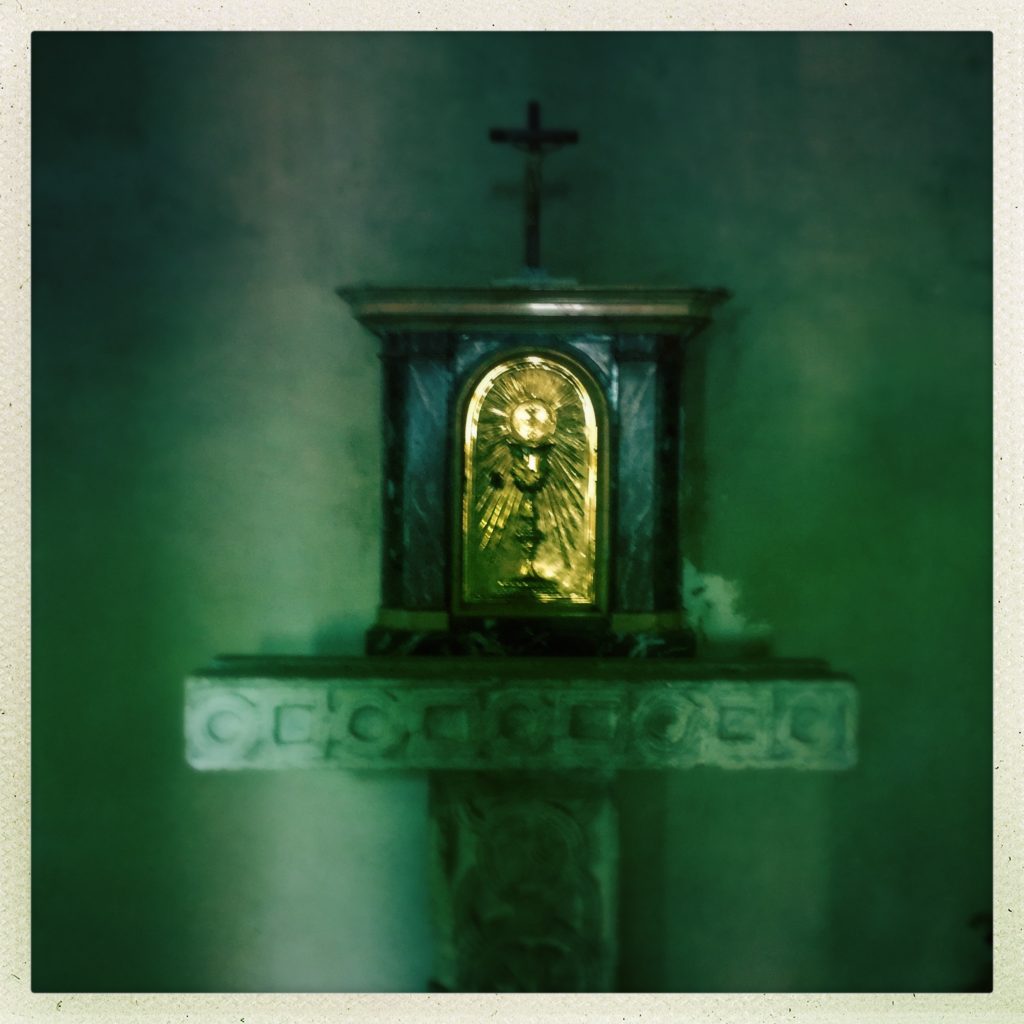
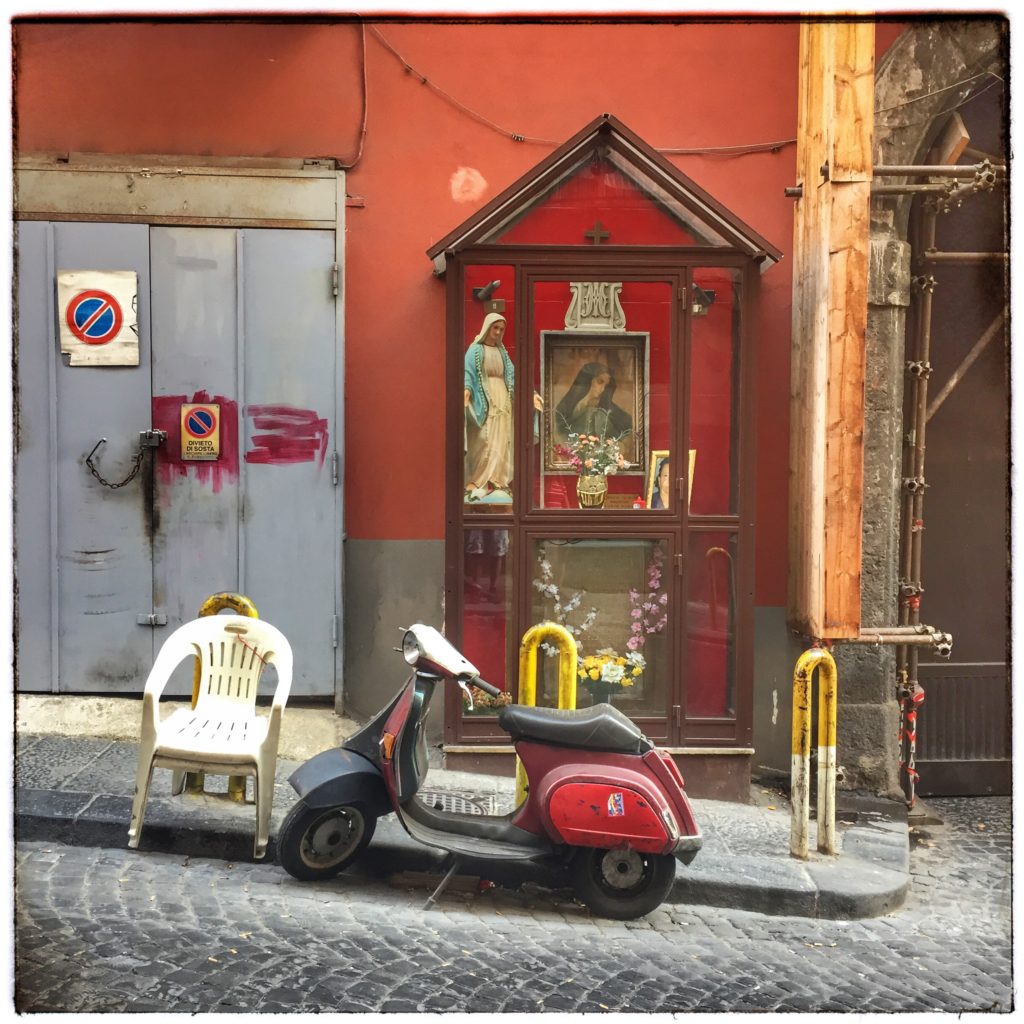 Naples
Naples
So I’ve made a conscious decision to continue to shoot film for the reasons above. But I’ve also learned a valuable lesson on this trip, and that is that I don’t really need to lug cameras and bags around with me to document my trip. My iPhone works just fine. In fact, it works better than fine. While I’ve not yet printed any of them, at least insofar as they appear on a computer screen, they look great, at the very least a level of quality equal to that we expected from our 35mm cameras, and the ease of use is incredible, as is the ability to process the results creatively in a way undreamed of 10 years ago. All the photos used to illustrate this post were shot and post-processed with my iphone, all with a few quick easy keystrokes.
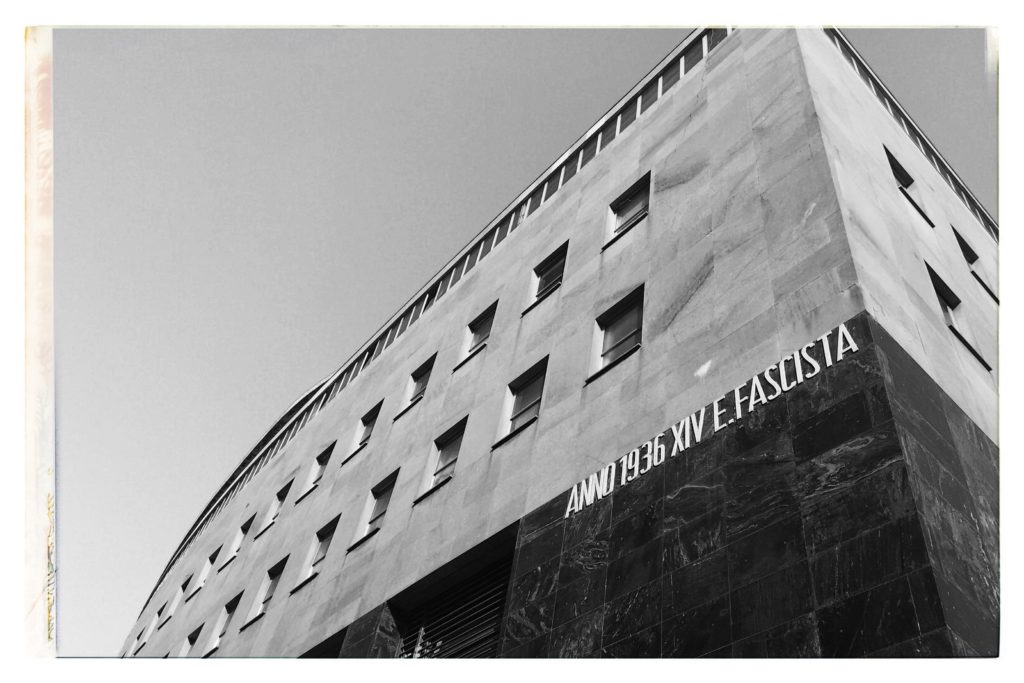
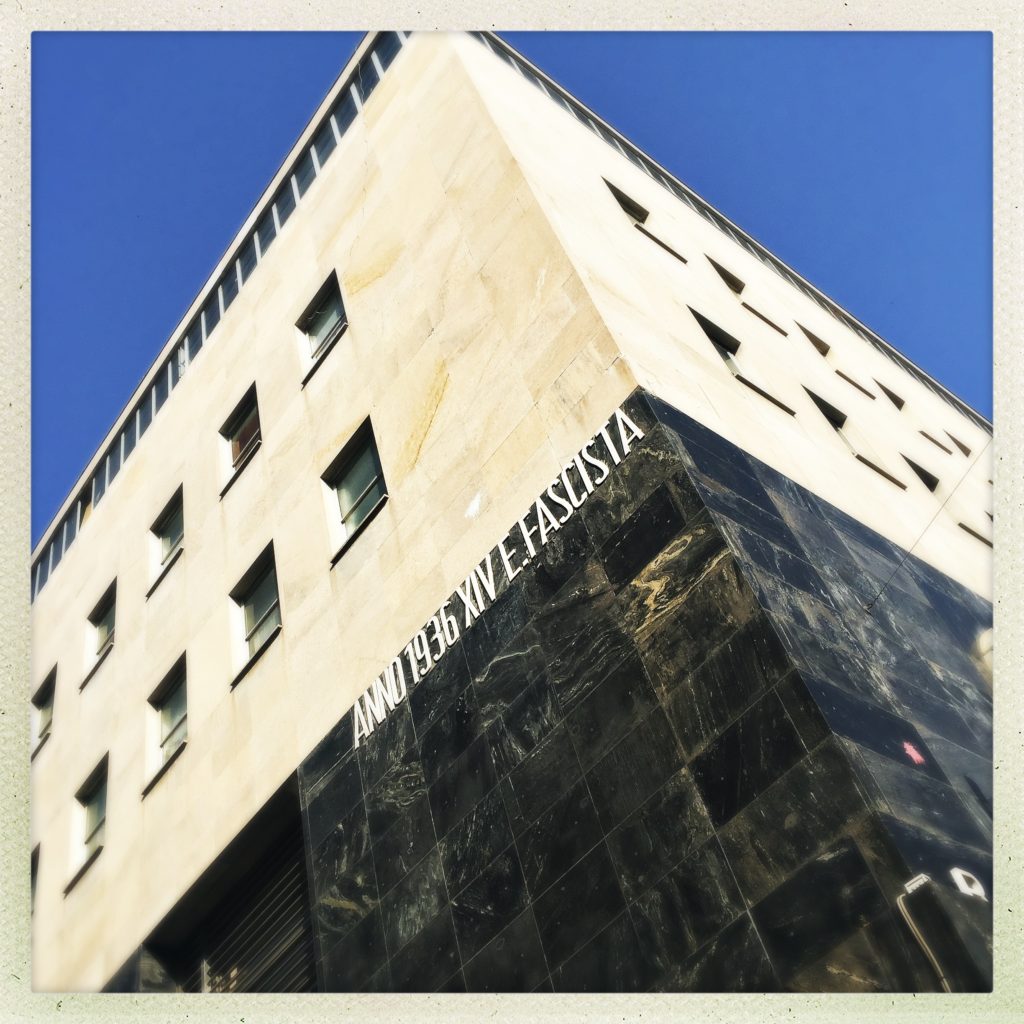 Two shots of a fascist era bulding in Naples, both with the iphone. using either Snapseed or Hipstamatic, I post-processed both right there on my phone in a minute or two.
Two shots of a fascist era bulding in Naples, both with the iphone. using either Snapseed or Hipstamatic, I post-processed both right there on my phone in a minute or two.
In a real sense, given its convenience and ease of use, the iphone is the legitimate digital heir to the Leica legacy. Quick and easy, always in my pocket, I’ve gotten all sorts of photos I’d normally have missed. I think at this point, the technology having sufficiently matured, the stand-alone camera is obsolete except for specific applications that require non-standard focal lengths or for those willing to do the extra work for increasingly marginal gains. But it will never completely negate the viability of film: When I want a photo I know will last, film it is.
Views: 2352

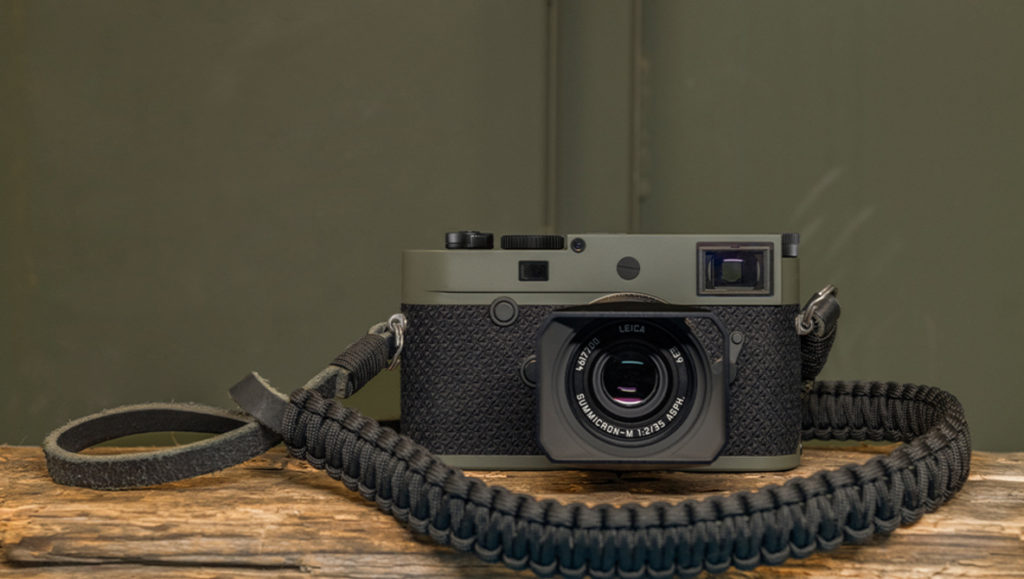


 Florence
Florence



